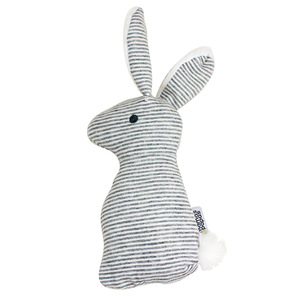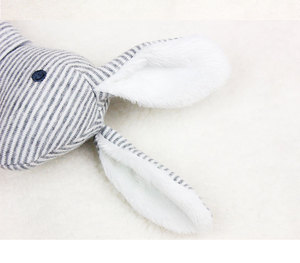(17924 products available)





































































































 Ready to Ship
Ready to Ship





























 Ready to Ship
Ready to Ship





 Ready to Ship
Ready to Ship





 Ready to Ship
Ready to Ship



































 Ready to Ship
Ready to Ship

















Import rabbits come in various breeds, each with unique characteristics and temperaments. Here are some common types of imported rabbits:
Lop rabbits
Lop rabbits are well-known for their long, drooping ears and stocky bodies. They are friendly and gentle and are often kept as pets. The French Lop, English Lop, and Miniature Lop are popular breeds.
Dutch rabbits
Rabbits originating from Holland are known as Dutch rabbits. They are distinguished by their white markings on their faces, which form a V-shape, and their compact bodies. They are friendly and easy to train, making them ideal pets.
Netherland Dwarf rabbits
With their small size and round faces, Netherland Dwarfs are charming and popular as pets. They are friendly and energetic and come in various colors and patterns.
Angora rabbits
Angora rabbits are known for their long, fluffy fur, which requires regular grooming. They have a friendly temperament and come in several breeds, such as English Angora and Giant Angora. Their wool is highly prized for its softness.
Rex rabbits
Rex rabbits have unique fur that is short and velvety, giving them a plush texture. They have a gentle disposition and come in various colors. The Rex breed is known for its hypoallergenic qualities, making it suitable for people with allergies.
Himalayan rabbits
Himalayan rabbits have a distinctive appearance with their all-white bodies and colored markings on the ears, nose, tail, and paws. They are calm and friendly and are often kept as pets. They have a unique appearance and a gentle temperament.
English Spot rabbits
English Spot rabbits are active and friendly, with a distinctive spotted pattern on their fur. They have a unique appearance, with spots and markings that resemble a butterfly's wings, and they are known for their playful nature.
New Zealand rabbits
New Zealand rabbits are large, all-white breeds with red eyes. They are known for their calm temperament and are often used in meat production and as show animals. They are friendly and easy to handle, making them suitable for various roles.
When choosing import rabbits for sale, business owners should consider the breed, age, and sex. Those looking to buy rabbits in bulk should start by checking the breed. Ideally, rabbits come in different breeds. Each has its temperaments and characteristics. For example, Dutch rabbits are calm and gentle. Typically, they make great pets for children. On the other hand, Mini Rex rabbits have a friendly nature. They are easy to train. Ideally, people keep them as house pets. Importing Mini Rex rabbits is a great idea for business owners looking to supply training rabbits.
Importing rabbits of various ages is beneficial. Young rabbits are easy to train. They adapt to new environments quickly. Buyers looking to get young rabbits for sale should consider getting them from the same litter. This will ensure the bonds stay intact. Adult rabbits are great for buyers looking for breeding stock. The animals are already trained and socialized. They will also start breeding soon. Lastly, buyers should get rabbits of different sexes. Those looking to breed them will have the female and male sex. Importing rabbits of the same sex is ideal for business owners looking to avoid unplanned litters.
Before importing rabbits, business owners should check the breed's health records. They should ensure the animal is free from any diseases. Rabbits should also be vaccinated against common diseases. This will help prevent diseases' spread to other animals in the business's possession. Buyers should also get rabbits that have undergone spaying or neutering. Such animals will not have behavioral issues such as aggression. They will also not have unplanned litters.
Rabbits require a spacious cage to move around. Before importing, buyers should check the size of the cages the rabbits are kept in. They should also check the conditions of the cages. The imported rabbits should be kept in clean and hygienic cages. This will ensure the animals are healthy when they arrive.
Rabbit meat is a popular choice for many due to its lean quality, tenderness, and mild flavor. However, ensuring its safety, especially when imported, is crucial to prevent foodborne illnesses and guarantee consumers a healthy alternative. Here are some safety considerations one should keep in mind:
Source Verification
Always source rabbit meat from reputable suppliers or farms that adhere to strict hygiene and animal husbandry standards. This includes ensuring the rabbits are raised in clean environments and are fed safe, nutritious diets.
Inspection and Quarantine
Imported rabbit meat must undergo rigorous inspection by relevant agricultural and food safety authorities. This can help spot any potential problems, including diseases or parasites, that might affect the meat's safety.
Temperature Control
Maintaining proper refrigeration during storage and transit is vital. Rabbit meat should be kept at temperatures below 40°F (4°C) to prevent bacterial growth. Ideally, it should be frozen if it has to be stored for an extended period.
Hygiene Practices
Strictly adhere to hygiene practices when handling raw rabbit meat. This includes washing hands, using separate cutting boards and utensils for rabbit meat, and ensuring surfaces are clean to prevent cross-contamination.
Cooking Temperature
Cooking rabbit meat to the right internal temperature is essential for killing any potential pathogens. The USDA recommends cooking rabbit to an internal temperature of 160°F (71°C). Using a food thermometer can help ensure this.
Ensuring quality and safety when importing rabbit meat is vital for maintaining consumer trust and adhering to regulations. Here are some key quality and safety considerations:
Source and Supplier Verification
Rabbit meat should be sourced from reputable suppliers or farms with a proven track record of adhering to high-quality and safety standards. This includes verifying their animal husbandry practices, hygiene standards, and feed quality.
Inspection and Certification
The imported rabbit meat must undergo thorough inspection. It includes checking for signs of disease, parasites, or contamination. Ensuring the suppliers have the necessary certifications, such as health and hygiene certifications, is crucial.
Temperature Control
Maintaining proper temperature control during storage and transportation is vital in preserving the quality and safety of rabbit meat. The meat should be kept at consistently refrigerated or frozen temperatures to prevent spoilage and bacterial growth.
Traceability
Maintaining a system of complete traceability from farm to fork is essential. This includes keeping detailed records of the source, transportation, and storage conditions of the imported rabbit meat. This can help quickly identify and rectify any issues that arise.
Hygiene and Handling Practices
Strict hygiene and handling practices should be adhered to when processing rabbit meat. This includes ensuring workers wear clean uniforms, regularly washing hands, and using gloves when necessary. Surfaces, utensils, and equipment must be kept clean to prevent cross-contamination.
Can someone get a domestic rabbit registered as a therapy animal?
Yes, it is possible to register a domestic rabbit as a therapy animal. Some organizations allow rabbits to be registered as emotional support or therapy animals. One needs to register with such organizations to get official documentation. Rabbits can provide comfort and companionship to people, especially those with disabilities or mental health issues.
Are there any special considerations when importing rabbits as pets?
Yes, there are special considerations when importing rabbits as pets. One needs to check the import regulations of the destination country to ensure the breed is allowed. Some countries require a health certificate and vaccination records. It's also essential to provide a comfortable and secure travel container for the rabbit.
What's the average lifespan of the imported rabbits?
The lifespan of an imported rabbit depends on the breed and care. On average, domestic rabbits live between 8 to 12 years. Some breeds, like the Netherland Dwarf, can live up to 15 years with proper care. Factors such as diet, housing, and veterinary care can also affect a rabbit's lifespan.
Are there any special dietary needs for imported rabbits?
Yes, imported rabbits may require special dietary considerations based on their breed, age, and country of origin. It's crucial to provide a diet that includes high-quality hay, fresh vegetables, and pellets specifically formulated for rabbits. Additionally, one should ensure that any dietary changes are gradual to avoid digestive issues.